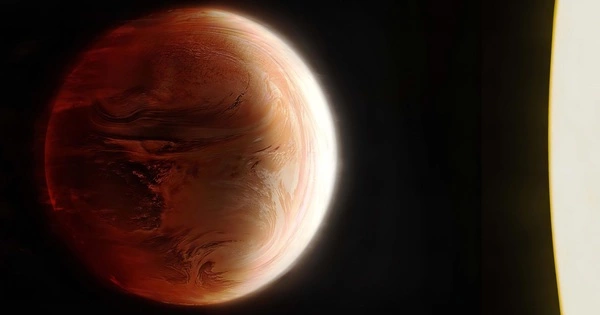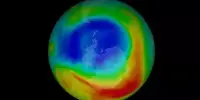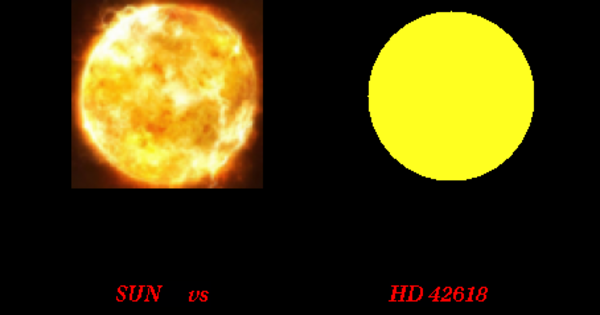Astronomers have discovered bloated Jupiter-sized planets that are so close to their parent star that they are being roasted at temperatures well above 3,000 degrees Fahrenheit. Most metals, including titanium, vaporize at that temperature. They have the most intensely hot planetary atmospheres ever observed. Hubble astronomers are reporting strange weather conditions on these hot planets. It is raining vaporized rock on one planet, and the upper atmosphere of another is becoming hotter rather than cooler as it is’sunburned’ by intense ultraviolet (UV) radiation from its star.
NASA Hubble Space Telescope astronomers may be in the mood to dance to the Calypso party song “Hot, Hot, Hot” while studying a unique class of ultra-hot exoplanets. This is because these bloated Jupiter-sized worlds are so close to their parent star that they are being roasted at temperatures well above 3,000 degrees Fahrenheit. Most metals, including titanium, vaporize at that temperature. They have the most intensely hot planetary atmospheres ever observed.
Hubble astronomers report on strange weather conditions on these hot worlds in two new papers. One planet is experiencing vaporized rock rain, while another’s upper atmosphere is becoming hotter rather than cooler as a result of intense ultraviolet (UV) radiation from its star.
This research goes beyond simply finding weird and quirky planet atmospheres. Studying extreme weather gives astronomers better insights into the diversity, complexity, and exotic chemistry taking place in far-flung worlds across our galaxy.
If we can’t figure out what’s going on on super-hot Jupiters where we have reliable solid observational data, we’re not going to have a chance to figure out what’s going on in weaker spectra from observing terrestrial exoplanets.
Guangwei Fu
“We still don’t have a good understanding of weather in different planetary environments,” said David Sing of Johns Hopkins University in Baltimore, Maryland, co-author of two studies being reported. “When we look at Earth, all of our weather predictions are still finely tuned to what we can measure. However, when you travel to a distant exoplanet, you have limited predictive powers because you haven’t developed a general theory about how everything in an atmosphere interacts and responds to extreme conditions. Even though you understand the fundamental chemistry and physics, you have no idea how it will manifest in complex ways.”
Astronomers describe Hubble observations of WASP-178b, which is located about 1,300 light-years away, in a paper published in the journal Nature. The atmosphere is cloudless and rich in silicon monoxide gas during the day. Because one side of the planet is always facing its star, the scorching atmosphere whips around to the nighttime side at super-hurricane speeds of over 2,000 miles per hour. On the negative side, silicon monoxide may cool enough to condense into rock that rains from clouds, but the planet is hot enough to vaporize rock even at dawn and dusk. “With this silicon monoxide feature, we knew we’d seen something really interesting,” said Josh Lothringer of Utah Valley University in Orem, Utah.

Guangwei Fu of the University of Maryland, College Park, reported on KELT-20b, a super-hot Jupiter 400 light-years away, in a paper published in the issue of Astrophysical Journal Letters. A blast of ultraviolet light from its parent star is creating a thermal layer in the atmosphere on this planet, similar to Earth’s stratosphere. “We had no idea how the host star directly affected a planet’s atmosphere until now. There have been numerous theories proposed, but we now have the first observational data” Fu said.
By comparison, on Earth, ozone in the atmosphere absorbs UV light and raises temperatures in a layer between 7 to 31 miles above Earth’s surface. On KELT-20b the UV radiation from the star is heating metals in the atmosphere which makes for a very strong thermal inversion layer.
Water was detected in near-infrared observations by Hubble, and carbon monoxide was detected by NASA’s Spitzer Space Telescope. They radiate through the hot, clear upper atmosphere created by the inversion layer. This signature differs from what astronomers observe in the atmospheres of hot Jupiters orbiting cooler stars such as our Sun. “The emission spectrum of KELT-20b is quite different from that of other hot Jupiters,” Fu explained. “This is compelling evidence that planets are affected by their host star rather than living in isolation.”
Though super-hot Jupiters are uninhabitable, this type of research contributes to a better understanding of the atmospheres of potentially habitable terrestrial planets. “If we can’t figure out what’s going on on super-hot Jupiters where we have reliable solid observational data, we’re not going to have a chance to figure out what’s going on in weaker spectra from observing terrestrial exoplanets,” Lothringer said. “This is a test of our techniques that allows us to gain a general understanding of physical properties such as cloud formation and atmospheric structure.”
















